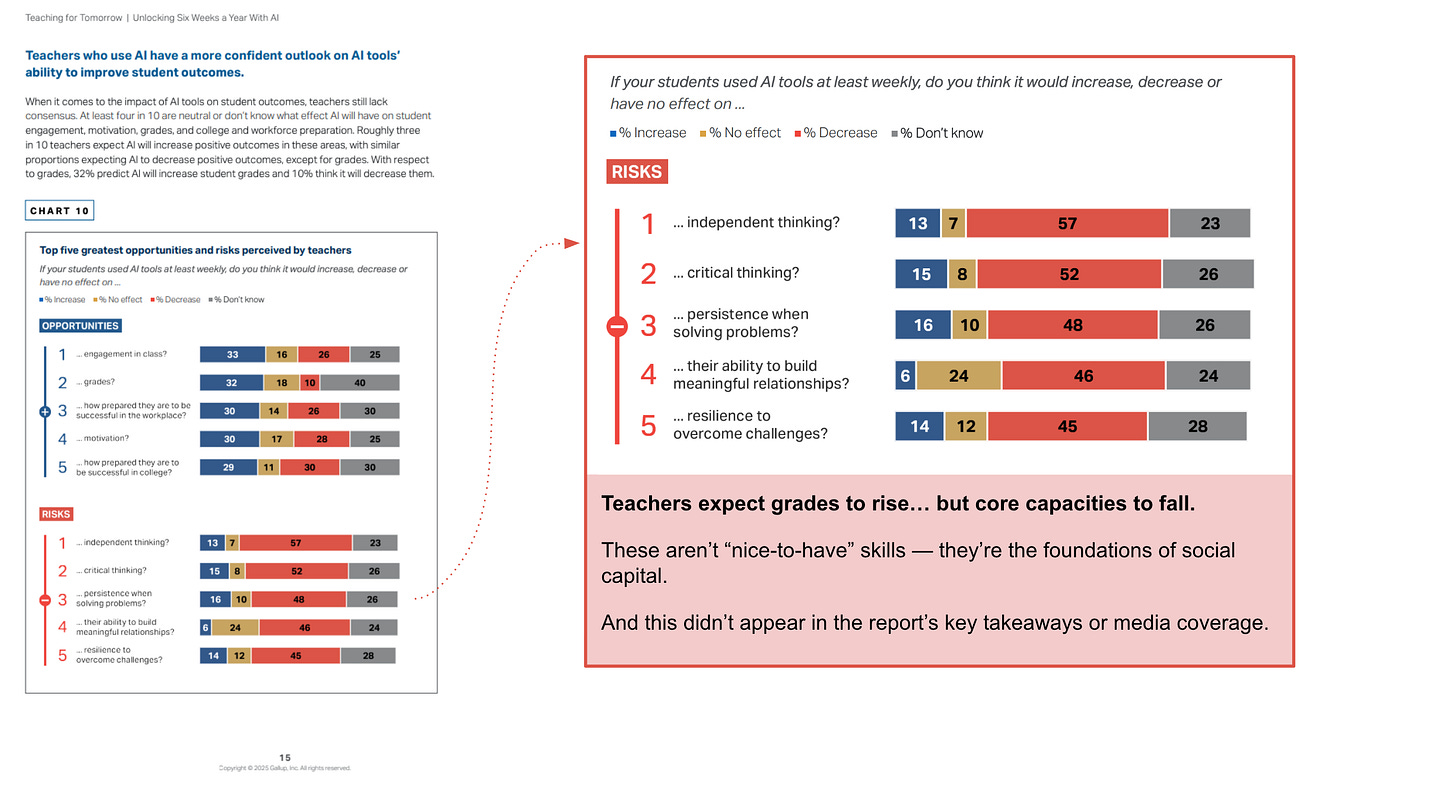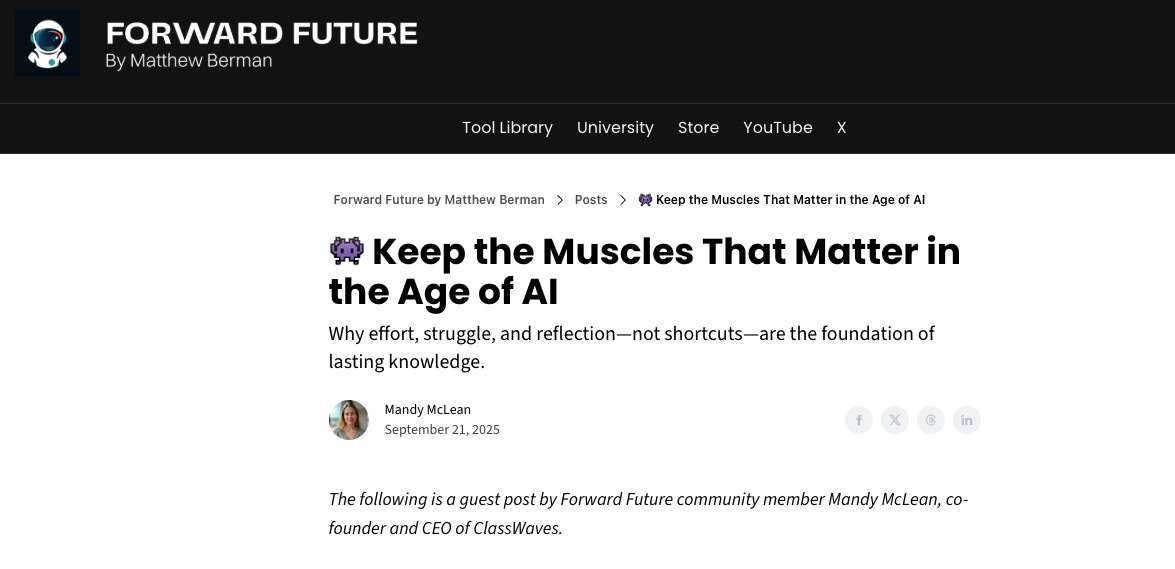Six weeks back. Five capacities down.
The question isn’t whether AI can save us time (it can), it’s whether we’re efficiency-ing away the hard things that actually matter for kids’ growth.
A Gallup–Walton survey this year made headlines for showing that teachers who use AI save an average of 5.9 hours a week, the equivalent of nearly six weeks a year.
What didn’t make the headlines was a quieter but far more consequential finding: teachers overwhelmingly expect students’ independent thinking, persistence, relationships, and resilience to decline with weekly AI use by students. It wasn’t listed among the report’s “key insights.” It didn’t even make the header of the page that contained the data, already buried on page 15 of 19.

The truth is, AI’s net value depends on the task. It delivers real bang for its buck on routine, well-structured work, but it risks hollowing out learning the fundamentals for kids if it becomes a crutch.
Children and teenagers are still developing, and often struggle to grasp the value of struggle itself. They crave shortcuts and rarely see the payoff of wrestling with hard things. Think of long-distance running. Most ultramarathoners peak in their mid-30s to mid-40s, not because their bodies are stronger than in their twenties (I can attest they are not), but because their minds are. Years of training teach you how to suffer, how to push through walls, how to stay with the discomfort long enough to reach the other side.
Adults (probably like you!) who have already built the muscles of learning can use AI as a genuine superpower. They know when to lean on it and when to fight through something themselves. But our kids, our adolescents, are a different story. They are hormonal, under pressure, and still learning how to step back and reflect. If AI offers them the easy way out, many will take it. What they gain will pale in comparison to what they lose: the very friction that forges resilience, judgment, and growth.
That’s why kids aren’t just “junior office workers.” In k-12, the content is often the easy part. The real value lies in learning how to learn, how to persist through confusion, ask better questions, debate ideas, and work with others. These are social muscles, and they only grow through struggle and interaction.
If AI has a role to play in schools (which I believe it can), it isn’t in making every individual task smoother. It is in strengthening the shared work of classrooms by supporting the questioning, collaboration, and human exchange that actually builds capacity.
And maybe that is the larger opportunity.
Using AI to make grading faster, when the assignments were created by another AI, seems like efficiency without purpose. Rather, this moment should push us to rethink the purpose of education itself.
Which leaves us with the deeper question: how do we protect the very muscles that matter in the age of AI, like attention, judgment, and persistence, when the technology itself rewards ease above all else?
I explore this in my new essay with Forward Future: Keep the Muscles That Matter in the Age of AI.
If you’re not already reading Forward Future, I highly recommend subscribing (the link to subscribe is here). Their daily newsletter is one of the sharpest updates on what’s happening in AI and how it’s reshaping our world.




